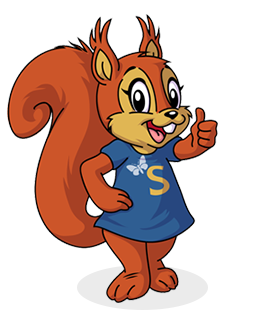Hooray! It’s half term. We are all in need of a break and recharge our batteries. Sadly, the weather forecast isn’t looking too good at the moment so it might be that you’re stuck indoors. Never fear … I have lots of ideas to keep you busy and entertained. These are all optional but will really help you to get the most out of the project next half term.
The spellings and maths for the test on Friday 4 March can be found at the bottom of this post.
Our new topic is a history driven project called Through the Ages. Children will have brought home a Knowledge Organiser to give you a heads up on what we’re learning next half term. This project teaches children about British prehistory from the Stone Age to the Iron Age, including changes to people and lifestyle caused by ingenuity, invention and technological advancement.
A great book to read to go along with this topic is Stig of the Dump by Clive King. You can listen to Tony Robinson read it here.
Optional activities to whet your appetite.
1. Create a timeline to put the following periods of prehistory into chronological order: Bronze Age, Iron Age and Stone Age (including the three periods of the Stone Age, Neolithic, Palaeolithic and Mesolithic). Use the internet or information books
to find the approximate dates for each period.
2. Use information books and the internet to find out about one of these aspects of Stone Age life: settlements, food, clothing, tools and weapons. Use your research to create an information poster about your chosen aspect. Include images and
topic-specific vocabulary to make your information poster interesting for the reader.
3. Who was the Cheddar Man, and what does he tell us about life in prehistoric times?
Visit the Natural History Museum website to find out the answer to this enquiry question. Record key information that you learn about the Cheddar Man on a mindmap. Expand on the information in your mind map by writing a detailed answer for the enquiry question.
4. Use the internet and information books to find images of artefacts from the Bronze Age. Use your existing knowledge and further research to create a table to provide information about some of the artefacts. Include an image or drawing of the artefact, the name of the artefact, its use and what it tells us about everyday life inthe Bronze Age.
5. In Britain during the Bronze Age, for the first time, there was a difference between those people who had wealth and those who did not. This was because some people had access to metals, while others did not. Use your research skills or existing knowledge to answer the following questions about this aspect of Bronze Age life.
• Why did access to metal mean that some people were rich and others were not?
• Which members of the Bronze Age communities controlled the metal mines?
• Why did the wealth of some people cause conflict?
• How did the conflict change the way that people built Bronze Age settlements?
6. Use information books or the internet to find out about Iron Age hillforts. Draw an illustration of an Iron Age hillfort and label its features, such as a hill, ditches, high walls or guarded gates. Write a short explanation about each of the features that you have labelled.
7. The Iron Age people of Britain, known as the Celts, were fearsome warriors. Use the internet and information books to find out about Celtic warriors. Use your existing knowledge and research to draw a detailed illustration of a Celtic warrior and write a short paragraph to describe their beliefs, clothing, weapons and warfare.
8. Visit Maiden Castle in Dorchester – one of the largest and most complex iron age hill forts right on our doorstep! Or if you fancy going slightly further then go to Stonehenge – one of the wonders of the world and the best known prehistoric monument in Europe – just over an hour away up the A354!
Useful websites
BBC Bitesize – What was prehistoric Britain like?
BBC Bitesize – Prehistoric – KS2 History
Natural History Museum – Cheddar Man: Mesolithic Britain’s blue-eyed boy
Natural History Museum – Cheddar Man FAQ
British Museum – Classroom resource – Bronze Age Britain
DKfindout! – Iron Age Hill Forts – What Are Hill Forts?
Good reads
The History Detective Investigates: Stone Age to Iron Age Clare Hibbert 9780750281973
Discover & Learn: Stone Age to Celts: The Study Book CGP Books 9781782941958
Savage Stone Age: Horrible Histories Terry Deary 9781407165592
Prehistoric Britain: Bronze Age and Iron Age Hill Forts Dawn Finch 9781474730488
Explore!: Celts Sonya Newland 9780750297356
Stone Age Boy Satoshi Kitamura 9781406312195
Super Spellers
find kind mind blind behind
Sparkly Spellers
address busy business heart fruit
Reading
If you have a Lexia login please try to do some at home – we are all trying to meet our weekly targets. It doesn’t matter if you have already met yours; the more you do, the better you get!
If you finish your reading book and want to do the quiz you can login here. Don’t forget you can quiz on your library book or home books too. (Not all books have quizzes but it’s worth typing in the title to check).
Writing
This week we have been learning to write instructions. See if you can find any instructions around the house. Can you spot the features we have been learning about?
Maths
Practise the number bonds of 16 and their subtraction facts.
10+6 9+7 8+8 7+9 6+10
16-6 16-7 16-8 16-9 16-10
A great way to help your child with sharpening up their number bond recall is to play games. For example this week the focus is on number bonds of 16. Make some cards, each with a digit on: ….. 6 7 8 9 10. Lay the cards face down on the table then turn 2 cards over. If they are a number bond of 16, keep the cards. If not, turn them both face down again. Don’t forget to practise the subtraction facts too. Let me know if you have another game that helps you.
It’s a great idea to login to TT Rockstars and practise at home too.
Have a great half term. Stay safe and well and we’ll see you on Monday 28th February for lots of book related fun!
Mrs Wood and Mr Price



